Backyard Naturalist: Phil Brown – Be on the lookout for goshawks and kestrels
| Published: 03-27-2023 11:14 AM |
March is a dynamic month that I’d never appreciated as much as I should have. My wife, a Pisces, begrudges me for this.
But thanks to picking up a new pandemic hobby a few years ago – backyard maple sugaring – I have changed my tune. The variability of this cusp season and the surprises it brings are some of the reasons I now cannot let this hobby go.
Hours of backbreaking work hauling sap buckets and tending to a never-ending fire for a meager amount of “liquid gold” don’t make for good economics. But, it is nature’s rewards of this extra outdoor time during an otherwise-fickle weather month that make it truly worthwhile.
One such sweet reward of sugaring season is watching the changeable spring sky and the birds brought north by its occasional south winds. Late March typically marks the beginning of a steadier spring raptor migration to the Monadnock region. Sitting around the outdoor fire with binoculars always nearby, I usually begin to notice the first turkey vultures rocking their way north as early as late February.
The majority of hawks, eagles and falcons, though, will pass through between late March and early May, and many settle into their breeding territories during this time. Bald eagles, the first local nesting birds, are already incubating eggs at area nests, including those at Nubanusit Lake and Powder Mill Pond.
But this time also marks the start of courtship displays of one of the region’s rarest raptor species – the Northern goshawk, a “species of greatest conservation need” as identified by the state’s Wildlife Action Plan. This large and reputably fierce Northern hawk is widely scattered across heavily wooded parts of the Northeast, and the Monadnock region may have a role to play in helping gauge population changes and threats during the breeding season.
According to David Brinker, a Maryland-based raptor biologist studying goshawks since 1978, breeding populations have declined precipitously in the Appalachians to our south, and the Northeast is the place to look for clues as to what is happening. The fact that the species uses large, unfragmented forests may be a big part of its decline from the more developed mid-Atlantic. New Hampshire, the second-most forested state in the country, may still be a stronghold.
This season, the Harris Center hopes to get a better handle on goshawks by crowdsourcing reports from birders, foresters, hikers and landowners. Reports of goshawks are scarce, and a “large backyard raptor” usually ends up being the more common bulky red-tailed or longer-tailed Cooper’s hawk.
Article continues after...
Yesterday's Most Read Articles
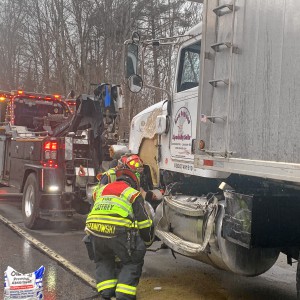 Crash on Route 202 in Jaffrey leads to trapped driver, fuel spill
Crash on Route 202 in Jaffrey leads to trapped driver, fuel spill
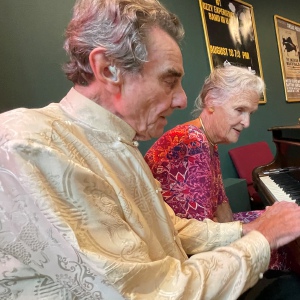 Bernie Watson of Bernie & Louise dies at 80
Bernie Watson of Bernie & Louise dies at 80
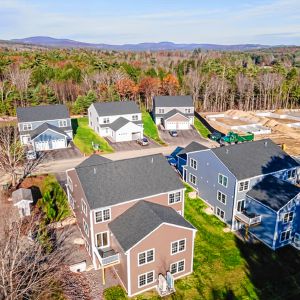 BUSINESS QUARTERLY – New housing projects could provide relief
BUSINESS QUARTERLY – New housing projects could provide relief
 Scott Bakula starring in Peterborough Players’ ‘Man of La Mancha’
Scott Bakula starring in Peterborough Players’ ‘Man of La Mancha’
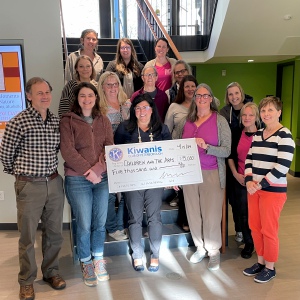 Children and the Arts Festival in Peterborough will have bird theme
Children and the Arts Festival in Peterborough will have bird theme
Look for a slate-gray back and a prominent white eyebrow, and later in the season, listen for harsh “kek-kek-kek” calls as the barrel-chested Northern goshawk defends its territory from potential predators. If it has young in the nest, it may consider you one, too, in which case you’ll know about it!
But despite the scarcity of sightings, this deep-forest species may be more common than we think. During spring migration, the vigilant hawk-watcher might see a few passing overhead from vantage points such as Pitcher Mountain in Stoddard, a place long considered one of New Hampshire’s best spring hawk-watching spots.
On the other end of the size spectrum, watch for the return of another spring sentinel – the diminutive and colorful American kestrel. This small falcon of open country habitats has declined as fields have reverted to forests, and suitable nesting habitat is in short supply, even where fields do exist. Lacking large, isolated nest cavities due to agricultural management and tree species changes, this “secondary cavity nester” inhabits woodpecker holes in larger trees, but they will readily take to nest boxes.
Across North America, including right here in the Monadnock region, nest box efforts are underway to reverse this decline and bring kestrels back to agricultural and open field landscapes. The Harris Center, with the help of interns from Antioch University New England and area volunteers, have teamed up to construct and install nest boxes in appropriate habitats identified through habitat modeling, a GIS-based approach that identifies and ranks locations with suitable attributes.
Kestrels return to our landscapes in April and May and typically seek out larger fields and pastures with a reliable food source for their breeding requirements. Their diet consists of voles, mice, insects, snakes and small birds. Their shrill “killy-killy-killy” calls while flying over fields or perched in snags and on wires might mean they are looking to breed in the area.
This spring, we hope they will find some of our nest boxes, too, and begin to reoccupy a landscape that we hope can support and sustain them.
Your reports of kestrels and goshawks are essential to our understanding of local bird populations, and the best way to record sightings is to log them into eBird (ebird.org), the free worldwide database of bird-sightings and information, a fantastic resource for anyone who appreciates wild birds.
For those interested in a deeper dive into breeding raptors of the Monadnock region, I’ll be leading a multi-part, field-based course through the Harris Center focused on this topic starting in early April. We’ll observe breeding raptors of several species and learn about their life histories and how we can best conserve them. More information is available at harriscenter.org/events/environmental-studies-institute-field-ecology-of-breeding-raptors/2023-04-06.
Phil Brown is bird conservation director/land specialist for the Harris Center for Conservation Education in Hancock. He can be reached at brown@harriscenter.org.
]]>

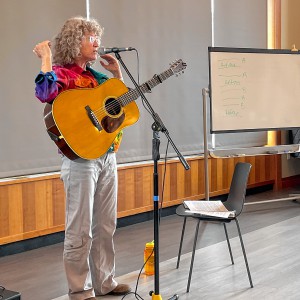 Cosy Sheridan speaks and performs for Monadnock Writers’ Group
Cosy Sheridan speaks and performs for Monadnock Writers’ Group ‘The Last Laugh’ coming to Town Hall Theatre in Wilton
‘The Last Laugh’ coming to Town Hall Theatre in Wilton
